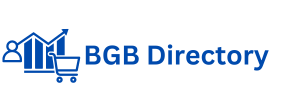A prospect database is a collection of business information about contacts interested in a company’s product or service. This information includes contact details and relevant details about potential customers. The main goal is to identify and track prospects to optimize sales and marketing efforts . A well-structured database helps increase the reach
of campaigns and effectively engage prospects
Leads can be categorized into several categories. Warm leads show immediate interest in your products or services. Warm leads have shown some interest but require additional follow-up. Cold leads have not yet shown direct interest but may become relevant in the future. Categorizing leads helps tailor communication v how to build telemarketing lead strategies and maximize conversion rates .
A well-functioning database offers many benefits to the business. It helps increase the reach of campaigns by identifying more ideal customers. Businesses can develop marketing campaigns that target strategic accounts. This reduces the uncertainty of campaign planning. A well-managed database helps reach and engage with more prospects.
Impact on sales and marketing
The impact on sales and 4 نوي او په زړه پوري آنلاین لوبې لوبې کول marketing is significant. A strong database improves engagement rates with key audiences across all advertising platforms. Purchase triggers help target prospects when they need your product the most. Prospecting emails reach the right people at the right time. This increases conversion
rates and optimizes sales and marketing efforts
To build a powerful prospect database, start by identifying your data sources. Sources can include contact forms on your website, newsletter signups, and social media interactions. Trade shows and networking events also provide opportunities to collect valuable information. Use tools like Google Ads for more targeted data collection.
Collection methods
Collection methods vary depending on your business needs. Use online forms to collect information directly from prospects. Surveys and aleart news polls help collect specific data. Web analytics tools, such as Google Analytics, provide insights into visitor behavior. Recording customer data systematically ensures a well-structured database.
Once you have collected your data, organize it efficiently. Use clear categories to structure the database. The information should be easily accessible and usable. Create specific fields for each type of data, such as name, email address, and phone number. Rigorous structuring makes it easier to manage customer data.
Lead categorization is essential for a successful database. Classify leads based on their interest level and engagement. Hot leads require immediate attention. Warm leads require regular follow-up. Cold leads can be followed up at a later date. This categorization helps personalize approaches and optimize sales efforts.



